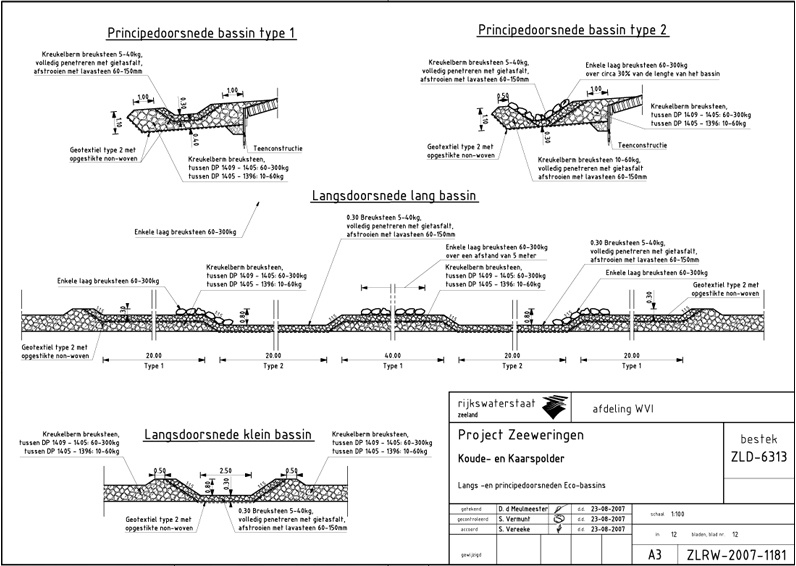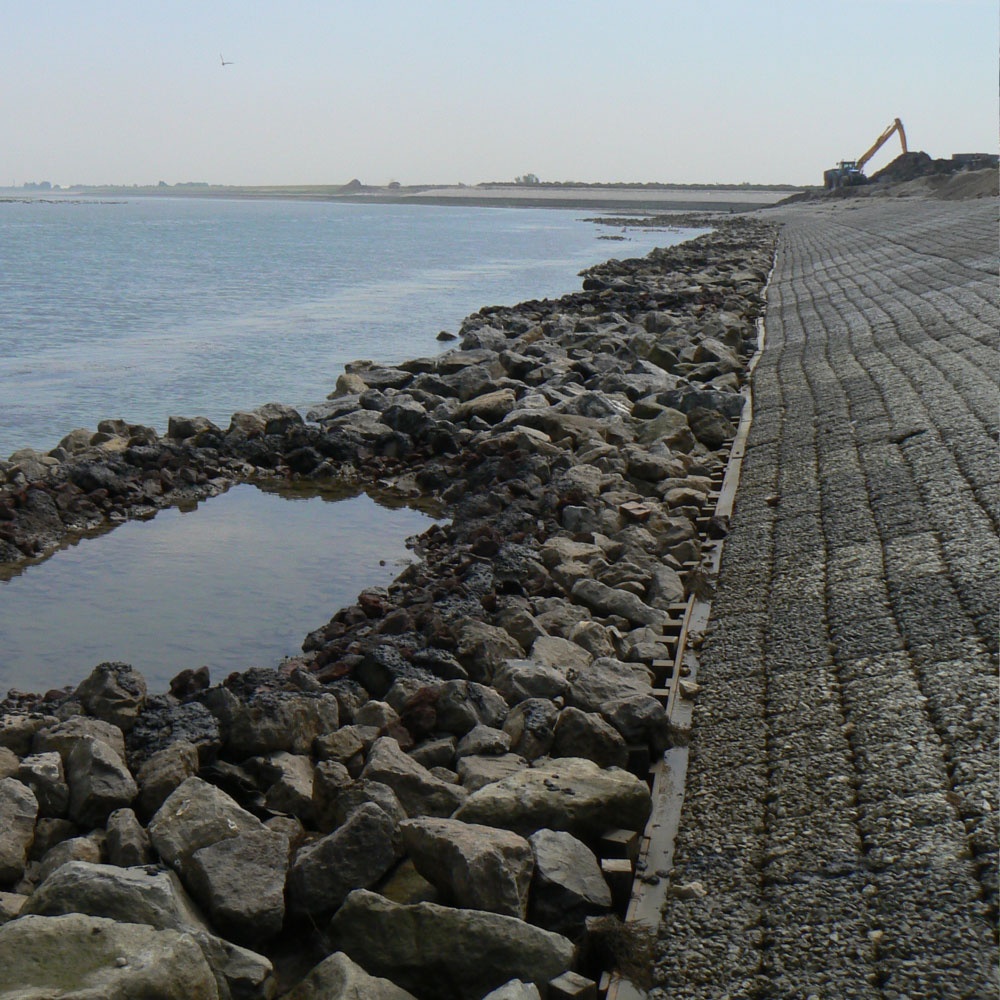Planning and design
In view of the influence of the envisaged ecobasins on the functioning of the flood defence system and the local environment, calling in physical and biological expertise on the local environment was important in order to have an effective design.
Detailed design
Important design parameters were the shape and the slope of the structure, the choice of materials, the size distribution and the porosity.
The technical design makes use of asphalt as a sealant to prevent leakage. Applying molten asphalt to create a pool with sloping edges proofed a complicated issue. Materials such as limestone and lava stone were selected to provide different substrates for species to attach to. Stones were loosely stacked to provide heaps to species to shelter from predators. These stones are of a size selection that is heavy enough to withstand the forces of wave impact.

The local climate and the local ambient ecosystem will provide the meteorological forcing (temperature, irradiation), hydrodynamic forcing (tidal range and current speeds), wave exposure and species diversity. The latter may be a limiting factor to the success of this type of project, because it needs a source from which the eco-basins can be colonised. Also note that the spatial scale of the structure and local ecosystem biodiversity will limit the choice of habitats that can be designed within a given project.

The design could be enhanced to provide more habitat for reef builders such as mussels and oysters (including associated species, such as crabs), or for macro-algae, which in their turn provide habitat to many fish and invertebrates. The foreshore allowing a design with dune or salt marsh vegetation could be achieved at the supratidal level. The design could be optimized to provide ecological functions for existing habitats in the ambient ecosystem. On the other hand, the same design principles could be utilized to reduce a priori the amount of habitat available for nuisance species, for instance in certain areas where they may reduce the quality of recreational activities. Filter-feeding animals such as mussels, for instance, are known to reduce the concentration of phytoplankton in the water column.
Governance aspects
In 2008 the Project Agency ‘Zeeweringen’ started the design and construction of the Rich Revetments near Yerseke. In 2010 they constructed another set of ecobasins with adapted design and size on the dike of the Stormesandepolder. The applied research institute Deltares (through the Rijkswaterstaat WINN programme) was involved in the generation of concepts and pre-designs, the selection of suitable locations and the involvement of stakeholders.
The construction of the basins is an integral part of ongoing dike reconstruction works. Yet, a separate Natura 2000 license track had to be followed, because of possible negative effects on protected species. A project planning for the main dike reconstruction works was already underway, put the need for new licenses for the inclusion of the ecobasins on the critical path for the project as a whole.
Important questions in the design phase were:
- Is the ecobasin scheme technically and economically feasible?
- Does it fit into the ongoing project planning?
- What are the ecological effects?
